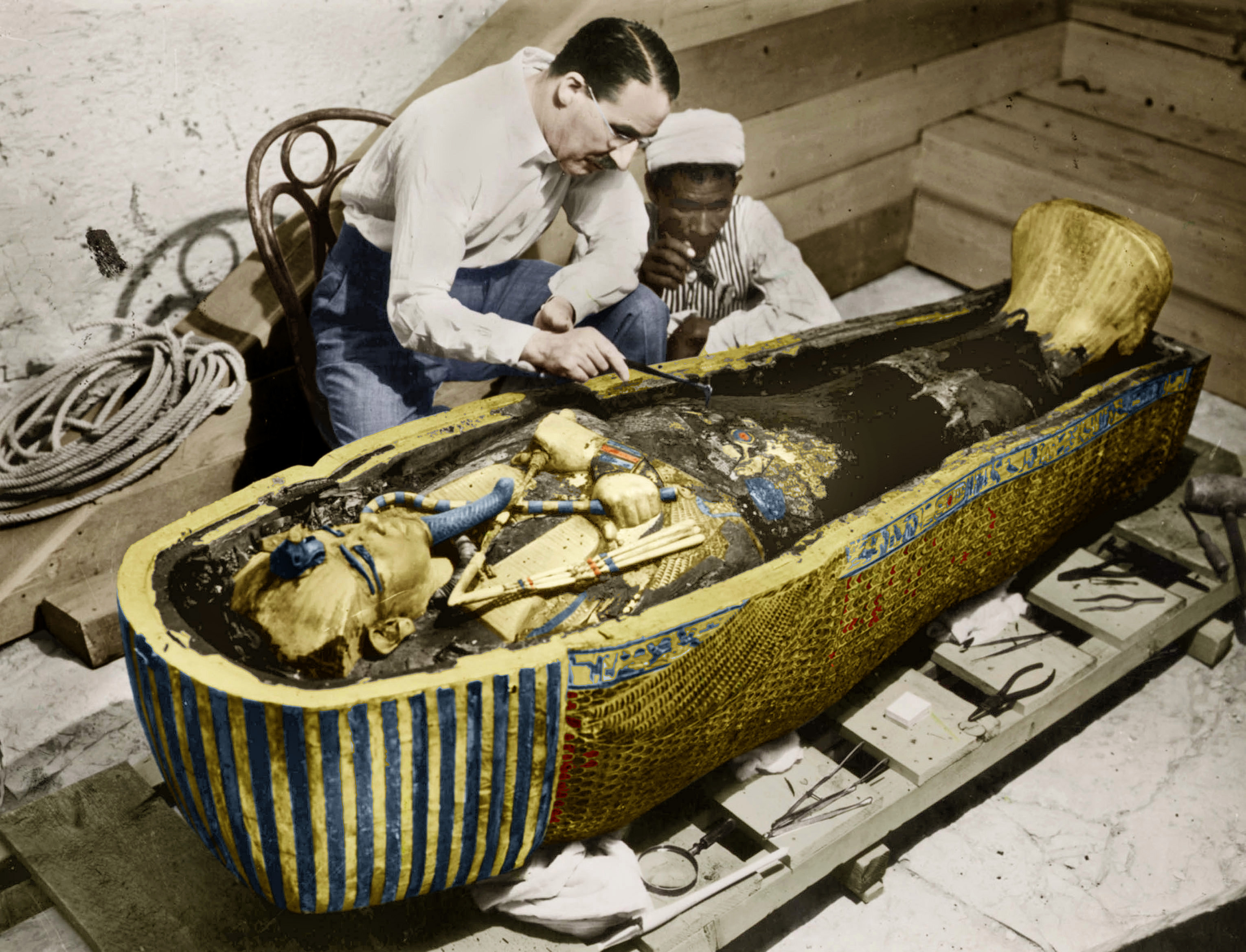
Every archaeologist who had dug in the Valley of the Kings in Egypt had dreamed of finding the tomb of a pharaoh. Those who did excavate a royal tomb found that they had been robbed long before their discovery.
Englishman Howard Carter was a talented artist, but he did not want to become a portrait painter like his father. He wanted adventure, and when he was 17 years old he got a job with an archaeologist who was on his way to Egypt in 1891.
In Egypt, Carter's job was to copy drawings and symbols onto paper so they could be studied. He quickly learned about ancient Egypt and about how archaeologists worked.
Carter believed that one tomb remained to be discovered – that of Tutankhamen, the boy king. He hoped that it would be undisturbed and contain treasure buried with the young pharaoh.
Carter wanted to search for Tutankhamen’s tomb, but that needed money. In 1907, a rich man called Lord Carnarvon, who believed in Carter, funded the hire of 50 men.
In 1914 Carnarvon obtained the right to dig on the site later called KV62. The KV stands for Valley of the Kings and the 62 means it was the 62nd tomb found there.
This was where Howard believed he would find the tomb of Tutankhamen, and he was chosen to manage the project.

Carter put together a team of workers, but when World War I began, the dig was stopped. Work resumed in 1917 and carried on for four more years. Their only major find was some ancient stone huts that were, disappointingly, empty.
Finally, Lord Carnarvon decided that enough was enough and told Carter to give up. Carter begged for one last chance. He wanted to dig under the stone huts he had found, and Lord Carnarvon agreed.
Under the huts the workers found a stone step. They kept digging. By the time they had finished, on November 4, 1922, they had discovered a long stairway which led down to a sealed door that Carter didn't touch.
Instead he sent a telegram to Lord Carnarvon in England. It took Lord Carnarvon two and a half weeks to reach the Valley of the Kings, making the final part of the journey on the back of a donkey.
On November 26, 1922, Carter cut a small hole in the door. 'Can you see anything?' Carnarvon asked. Carter answered: 'Yes, wonderful things!' Inside they found four rooms ?lled with treasure.
As well as gold jewellery, statues and chariots, they found a gold coin containing the mummy of the pharaoh Tutankhamen, the boy king of Egypt.

Click on the image below to watch a slideshow on pictures on King Tut's tomb!
.jpg)